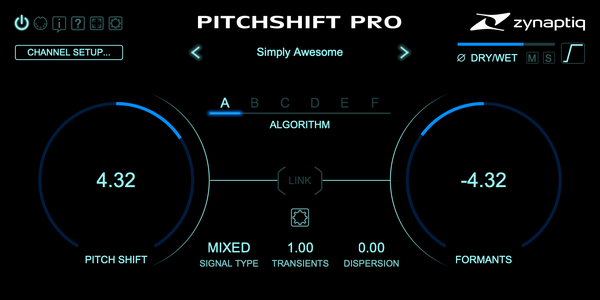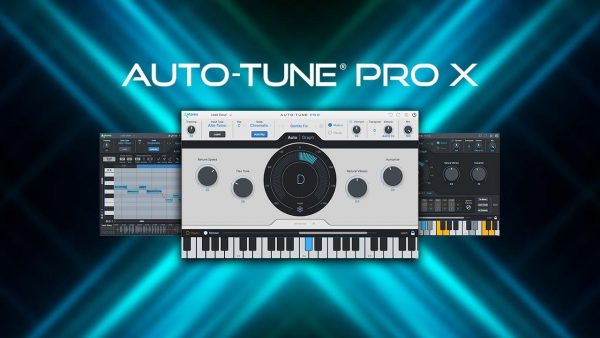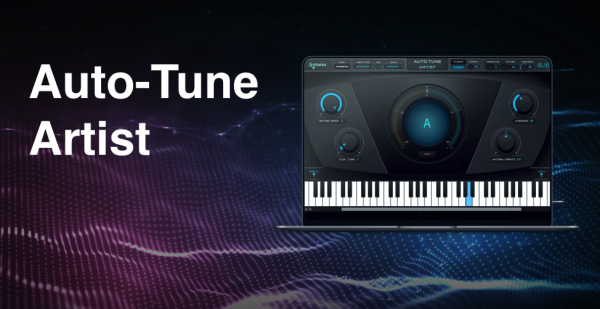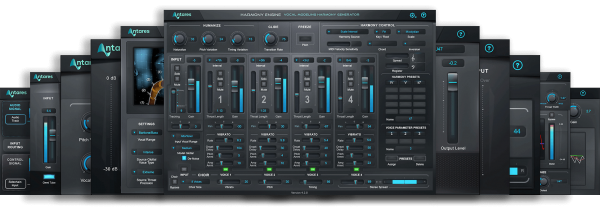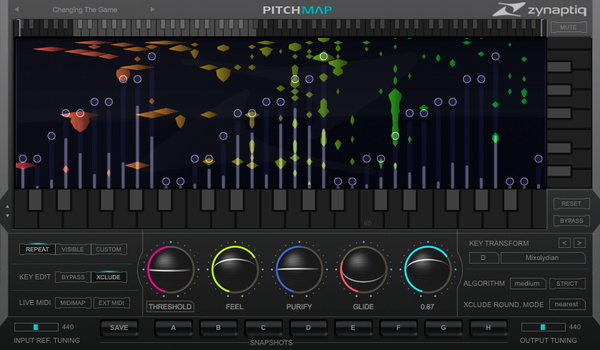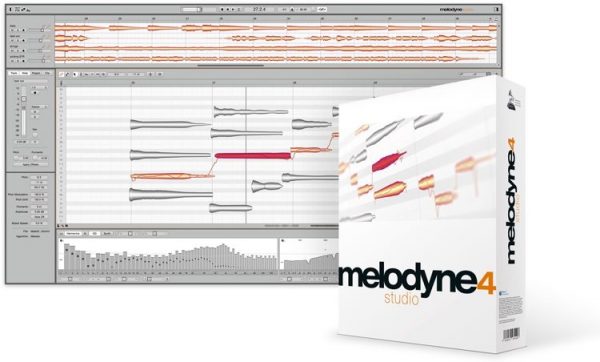![[音高修正效果器插件]Celemony Melodyne 5 Studio v5.1.1.03 v5.1.1.003 [WiN, MacOS](138MB)插图 [音高修正效果器插件]Celemony Melodyne 5 Studio v5.1.1.03 v5.1.1.003 [WiN, MacOS](138MB)插图](https://www.midivst.com/wp-content/uploads/2022/06/asset-core-resize-8576110725327693667.jpg)
WiN: Team RET | 24 MB | MAC: CODESHiNE | 117 MB
Melodyne grants you unrivaled access to all the musical details in your recordings and samples – note by note. This is made possible by a sophisticated analysis that delves deeply into your recordings and samples, and recognizes and understands the musical relationships within them: the individual notes and their characteristics, the scales, keys and chords, the timing, the tempo, the tone color. And with Melodyne you can edit all these things intuitively. With vocals, but every type of instrument as well – including polyphonic ones, such as the piano and guitar.
New in Melodyne 5
New technologies, for better results in less time. Thanks to the fundamentally improved “Melodic” algorithm, Melodyne makes your vocal editing even better than before. With perfect, natural corrections at the press of a key. Thanks to the Chord Track, you can adapt notes with lightning speed to suit the song – chord recognition included. And with the unique Fade Tool, you can create note-based fades – even in polyphonic recordings and samples.
All this is new:
- the ability to edit pitched and noise-like components separately with the “Melodic” algorithm
- a more musical analysis of pitch deviations
- the Chord Track and Chord Grid for pitch editing, chord recognition
- the Fade Tool and Leveling Macro for editing dynamics
- an additional algorithm (“Percussive Pitched”) plus other algorithm improvements
- search functions for keyboard shortcuts, saving of shortcut sets
Vocals, now even better
Melodyne heightens its core competence. The “Melodic” algorithm used for vocals can now distinguish the unpitched, noise-like components of a note – i.e. voiceless consonants (such as sibilants like “s”) and breath sounds – from its pitched components. Even when they coincide. And although all pitch and timing changes are implemented in the tried-and-tested manner as far as the pitched components are concerned, different rules that emulate accurately the natural behavior of the human voice govern the handling of sibilants. So now when you are working with Melodyne, you obtain the highest possible sound quality and most natural-sounding results automatically.
Pros will be relieved to discover it’s no longer necessary to isolate each individual sibilant by hand. That saves a lot of time and makes for a more meaningful display in the Note Editor. At the same time, the results sound far better, as automation works more precisely and overlaps between sibilants and pitched components are taken into account.
Sibilant detection not only yields acoustic advantages but also new creative possibilities: With the Sibilant Tool, you can adjust the balance between the sibilants and the pitched components of a note. Sibilants can be attenuated, muted altogether, emphasized or even isolated – everything is possible. So, into the bargain, you get a perfect de-esser that only affects the problem areas and has no side-effects on other components of the vocal sound.
Modeled on human hearing
Why do some notes sound out of tune and not others Fluctuations in pitch contribute to the quality of a vocal performance, because it is through them that passion and emotional complexity find expression. They give it, in other words, its human dimension. But for their contribution to be a positive one, the nature, scope and precise timing of such fluctuations is of crucial importance.
A note doesn’t necessarily sound sharp or flat just because it isn’t “spot on” mathematically. Just particular, often very brief segments of the note annoy us. Sometimes at the beginning, sometimes at the end, sometimes somewhere in between. It is these crucial segments that have to be perfectly in tune; if they are, the note will sound right to us. The presence of any fluctuations before or after to such segments doesn’t trouble us – to the contrary, we feel they add life to the performance and sound natural.
Melodyne now identifies these problem areas precisely, and the offset shown in the Note Inspector is calculated from the pitch of each note at the crucial moment only – not its entire lifetime. As a result, double-clicking (to set a note’s offset to zero) now yields precisely the right musical result. Also the macro profits from this new, even more musical approach: Each individual note is pitched to perfection. Yet everything still sounds natural and alive.
The Chord Track and Chord Grid
Work better with chords, adapt notes quickly. Melodyne 5 offers you a chord track that is linked to the Pitch Grid in the Note Editor. This makes working with chords far more enjoyable and harmonies more transparent. Because you can see at any time which pitches are compatible with the current chord and can adapt the notes accordingly with lightning speed. This is helpful when you’re altering chords, and if you want to match any sample harmonically to your music, it works like a dream.
Autopilot for chords. Melodyne’s chord recognition technology is so advanced, it can consider tracks apart or together – even the entire mix – and identify the chords formed when their notes are combined. It analyses your recordings fast and reliably and fills in the Chord Track automatically. This makes working with chords even easier.
New in Version 5.1
**Features and improvements**
*macOS 11 Big Sur: Melodyne 5.1 is compatible with macOS 11 Big Sur on Intel-based Macs as well as on ARM-based Macs under “Rosetta”.
*DAW-oriented keyboard shortcuts: We are always looking for ways to make the operation of Melodyne even easier for users of digital audio workstations. That’s why we’ve included sets of keyboard shortcuts customized for Pro Tools, Logic, Cubase and *Studio One in Version 5.1. You can choose the set you want from the Shortcuts page of the Preferences dialog.
*Exporting lead sheets: It is now possible to export the contents of the Chord Track as a lead sheet via MIDI; you will find the relevant command in the Chord Track’s context menu.
*Algorithm selection: During ARA operation with Cakewalk, Melodyne’s Select Algorithm menu is now displayed prior to any MIDI export.
*ARA improvements: The interaction with ARA DAWs has been optimized in various ways – partly to ensure compatibility with future DAW versions.
*New keyboard shortcuts: It is now also possible to assign keyboard shortcuts to the following commands: “Show Sibilants”, “Note Leveling”, “Copy Song Data to Note Assignment…” and “Copy Note Assignment Data to Song…”.
**Bug fixes**
*A keyboard shortcut assigned to “Toggle Cycle Mode” now also works reliably when Melodyne is running as a plug-in and under ARA.
*MIDI export has been improved and muted notes are no longer included in the export.
*Under macOS, keyboard shortcuts using the function keys are now also correctly displayed in the menu.
*The “Set Cycle to Selection” function now also works correctly in Studio One.
*When you stop playback in Pro Tools, the playback cursor in Melodyne now remains where it was when playback was halted, instead of springing back to the previous start position.
Team RET Note:(v5.0.2.003)
Our release works on Windows 7 unlike legit version. Thanks R2R for helping!
* No iLok driver installation needed.
* It launches faster than original version.
* Install VST3 for ARA integration.
home page
https://www.celemony.com/en/start

